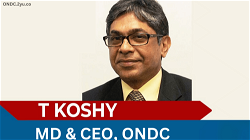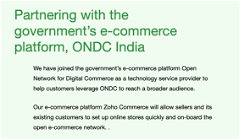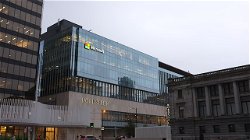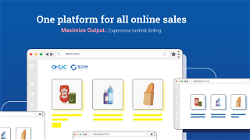ONDC CEO T. Koshy on democratizing e-commerce and redefining its future
Advik
. 12 min read
CEO and MD of ONDC (Open network for Digital Commerce), a man who many say is assuring in a revolution that will completely transform e-commerce.
By 2047 India will be 100 year old. Its already one of the top economies of the world, powered by its people, a billion strong. But what should be the focus when it comes to prosperity, to inclusive growth and which is integrated with social progress? What should be our priorities? What should be our policies?
Words with ONDC CEO T. Koshy:
A brief interview with ONDC CEO and MD T. Koshy.
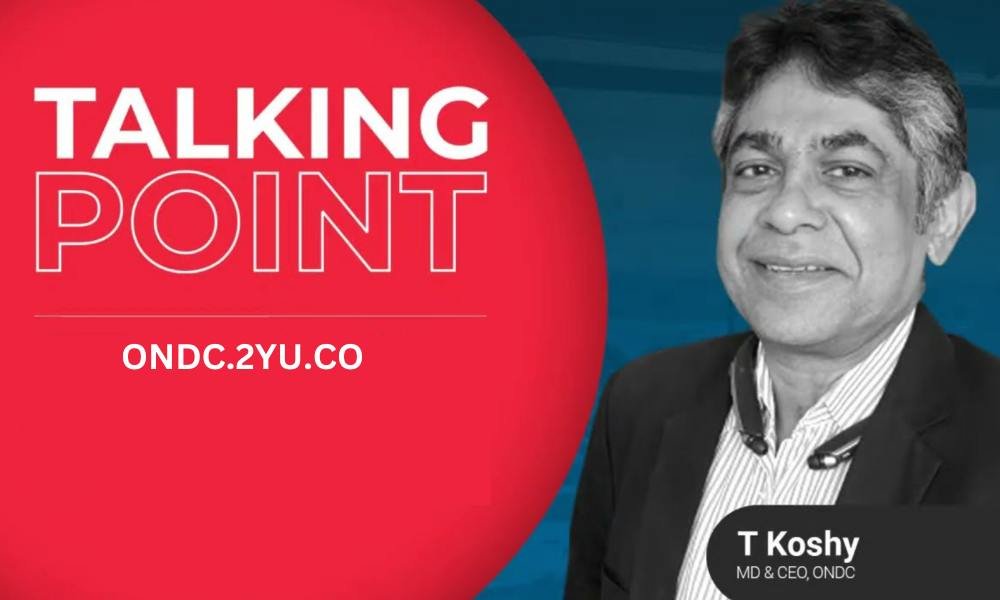
How did ONDC actually begin and how did you come to be involved with it.
There have been two significant triggers that led to the development of ONDC. The first trigger was identified by the honorable minister Piyush Goyal, when he discussed with the team at DPIIT and Michelangelo, the head of the initiative, that a solution was needed to give customers access to neighborhood stores. They proposed developing an IT solution and decided that a digital solution would be the best option, as more and more people are moving towards digital methods. However, when they discussed the idea of creating another app, they realized that it would be restrictive as customers would have to be on that specific platform, and merchants would also have to be on that platform.
A committee was created, consisting of representatives from the private sector, such as adults and Ruby, and Anjali Bansal, among others. At the same time, a group of geeks had been working on an idea for an open-source protocol to enable any kind of transaction, called the Beckon Protocol, which was developed mostly by Indians, but it is a community-driven open-source one. The steering committee recognized the potential of this idea and decided to use it as a foundation to transform the way commerce is conducted. The current system is restrictive and concentrated in the hands of a few, so this was seen as an opportunity to change that. They formed an Advisory Council and brought in people such as Doctor Sharma, and Nandan Nilekani, among others, to develop the idea of the Open Network for Digital Commerce (ONDC). T. Koshy was involved in multiple large digital transformation projects in the past 25 years and was brought into the team as a resource person and to help chart the way forward for ONDC.
Was on a discussion on up. I want to another top people in the industry that time you said that what is going to happen today we are doing about 250 million transaction a month and another 3 years it will double. I mean they could not think beyond but today another 6 years it is 250 million has become c billion. So that is a kind of impact that we are. Talking, you know,
Democratizing Digital Commerce and how will that increase the adoption of ONDC
There is a strong startup ecosystem that is looking for opportunities to innovate and not be limited to specific areas. These startups can find scale if they are part of a larger system or they sell to someone else. ONDC is providing them equal opportunities to succeed based on their offerings, instead of being restricted by captive control. ONDC is also supporting the startup ecosystem by facilitating transactions through payment and UPI, which have become widely accepted and prevalent. With banking penetration at 85-90%, digital transactions and UPI are comfortable for all, even small vendors, and eliminates the need for cash-on-delivery systems in e-commerce.
Now, with the help of digital currency, even the smallest of merchants, such as street vendors, are comfortable accepting it. The combination of various elements has led to the possibility of extending credit to a broader cross-section of people. Currently, lending is primarily based on assets, but the ONDC is exploring flow-based lending. This is where ONDC comes in, as it will create a flow of digitally verifiable data. ONDC will act as the foundation for major companies to give the industry and innovation explosive growth potential. With the ONDC, all the necessary elements are coming together to truly empower everyone and help citizens and the industry at large benefit in a more comprehensive fashion.
What are the challenges that ONDC foresees in increasing ecommerce penetration in India by 25% over the next 2-3 years, with a vision to reach sellers in the remotest parts of the country in terms of awareness creation, implementation of ONDC, and helping these businesses scale?
A valid point is that while ONDC aims to provide equal opportunities for everyone, not everyone is equally capable of taking advantage of it. ONDC's role is to create a protocol and enable everyone to benefit from it, but additional support is needed to help small and medium enterprises who may not be digitally capable to do so in the most efficient way. One of the main challenges ONDC faces is to ensure that there is a certain level of participation and reaching a threshold volume that will make everyone excited about the opportunities it provides. This requires working with early adopters who are digitally mature, while also providing initiatives to help digitally challenged entities to become digitally powerful in a short period of time. To achieve this, ONDC is working with organizations such as SIDBI, NABARD, the Ministry of Micro, Small, and Medium Enterprises, and others to provide digital education and financial literacy. Additionally, ONDC's strategy is focused on enhancing market access, as this is a major driver for the transformation of businesses.
What mechanism will ONDC employ to build confidence between merchants and customers in order to establish trust between the two parties?
Building trust between merchants and consumers is a crucial aspect of the digital commerce industry. One way to achieve this is by creating a mechanism that allows for a level of control for both parties. For example, in a traditional digital commerce platform, the buyer and seller are both tied to the platform through a contract, and if the buyer is not satisfied with their purchase, the seller has no choice but to either replace the product or give the money back. In this way, the seller has control of both the money and the contract. This same concept can be applied in an open network for digital commerce, such as the ONDC, where buyers and sellers have the ability to negotiate the terms of their transaction and only those willing to accept such terms will engage in trade. Additionally, specialized, privileged buyer applications like NDMC, can be developed to attract more high-end customers and increase trust in the system.
In the digital marketplace, sellers and buyers both have control over the transactions. This is achieved by implementing a system where the buyer holds the money and has a say in the contract terms. The same system can be applied in the open network for digital commerce (DC). By using a privileged buyer application, buyers can set certain conditions for their purchases and only those sellers who are willing to accept those conditions will participate in the transaction. This helps to build trust between buyers and sellers, while also allowing for multiple options and combinations in the marketplace.
The market for e-commerce can have different options for customers, with some sellers offering discounted prices with no return policy and others offering more flexible terms. OMDC's role is to bring order to this market and enforce rules for participating businesses. To become a part of the platform, businesses must first express their interest and provide proof of their existence and address. They will then be required to sign an agreement that is the same for all members, regardless of their size or status, ensuring fairness and consistency. The agreement also includes network policies, which are the rules and regulations of the community. By signing the agreement, members commit to following these policies and behaving in a manner that upholds the good wishes of the community. Additionally, all applications must be certified for the ONDC protocol, which ensures that discipline is upheld through software and is digitally verifiable and trackable. To strengthen the community, ONDC will implement a network-wide reputation system, where the reputation of each member is publicly available. This system will track performance, including the number of grievances, disputes, and resolutions.
So now the consumers will have visibility into all of the transactions taking place on the platform. Imagine that you are not part of a large, established platform, whether you are a buyer or a seller. You may not have any loyalty to specific sellers, because the platform presents you with many options. For buyers, the loyalty lies with getting the best deal, regardless of the seller. For sellers, the loyalty lies with having a good reputation, in order to attract more buyers. So, if there are any issues with a transaction, the platform will take steps to ensure that it is resolved and follow up is done, and this information will be published publicly. As a seller on the platform, you may not have any guaranteed buyers. So it's important to maintain a good reputation in order to attract more buyers. This is why I say that it's a self-correcting model. Keep in mind that all of these policies were developed through extensive consultation with market players, the industry, bankers, and risk managers, and that a number of large enterprises have signed on to these policies.
Do small businesses have the discipline to consistently update their inventory and catalogues, and is there a need for a behavioral shift for them to take advantage of e-commerce opportunities?
The neighborhood shop wants to be digitally visible for its set of customers. The shop owner has no ambition to be global, but rather only to be visible and empowered for the local community. Therefore, solutions are being developed to help these small businesses. These solutions assure them not to worry about finding buyers, as large institutions such as banks and the Ministry of Agriculture are trying to digitize their suppliers. The challenge is finding buyers, and that is not an expense for buyers anymore. Banks such as Kotak, HDFC, SBI, AXIS and South have no incentive to promote a particular product. For example, if a buying application had a tie-up with a shirt manufacturer, they would have no reason to encourage one brand over another. The buying application now has an incentive to encourage buyers to experiment with different products and not just be influenced by what is advertised, but instead to search for and find products based on their own preferences and cultural sensibilities. This way, buyers can take advantage of the wide variety of choices available across the country, not based on advertising budgets, but rather based on individual preferences.
What is the potential of ONDC in democratizing the financialization of ecommerce, and how does it aim to enable the ONDC ecosystem partners to tap into new markets beyond the reach of companies like Amazon and Flipkart?
A couple of things, one correction is that we are not a single platform, but rather we enable multiple platforms to interact with one another. Some of these platforms may cater to the needs of an elite market, while others may be geared towards a specific target audience. For example, one of our investors, the Citizen Service Center, is developing a buyer and seller platform that targets a specific group of customers and the products they are interested in. We anticipate that innovation will happen around this, including the development of Indic language support and efforts to promote local products and artists. The journey to achieving this will be long and challenging, but everyone sees the economic value and sustainability in it. This is why we expect a large ecosystem participation in developing solutions. Like I said before, if you want to create a simple HTML page or a ready-made solution like WordPress, it's all possible.
What are the key aspects of the proposed ecommerce policy that the government is formulating, and how do you expect it to impact the Indian ecommerce market, ease of doing business, innovation, and FDI in the sector, particularly as it relates to the stabilization and growth of the DC ecosystem?
See, at the policy level, large issues such as digital concentration are being evaluated by policy makers. I don't want to comment on those, but it's important to note that there are constraints the policymakers are operating under. These constraints, specifically those related to digital concentration, are not unique to India. Many countries around the world are trying to come up with policies to address issues of concentration and related practices. For example, the United States has attempted to pass the American Innovation and Online Consumer Choice Act, but it has not yet been successful. Similarly, the Europeans are looking into a Digital Market Access Act. These are challenges that India is facing as well. From the perspective of ONDC, one of the biggest opportunities for the government is that, as ONDC gains momentum, it could use technology and market forces to address issues of concentration and lack of competition. In this context, the government may not be trying to come up with anything specific for ONDC, but rather experimenting with ways to encourage wider participation and give equal opportunities to all. The focus may shift from trying to control the problem to enabling more competition.
In 5 years from now, how do you envision ONDC evolving in terms of convenience, fair competition, job creation, democratizing opportunity and setting a blueprint for ecommerce for the rest of the world?
Whenever someone decides to set up a business, the first thing that comes to mind is creating an e-commerce portal. For a brand manager, this is just one of many channels of communication and it's under their control. However, when it comes to digital commerce today, there are many conditionalities attached to specialized platforms that dictate certain segments. Tomorrow in an ONDC environment, it will become just another extension of the brand manager's marketing strategy. Currently, as a brand manager, I have control over my pricing, discounts, and advertisements, but on e-commerce platforms, these decisions are made by a few platforms. With ONDC, this becomes irrelevant and e-commerce becomes just another extension of a brand manager's strategy, another channel. My ultimate goal is that in our country, and possibly even worldwide, the ONDC model will become a benchmark for digital commerce. Anyone who has a product or service to sell will be able to make it digitally visible on an open network that connects different buying platforms, based on the type of buyers they represent. It will become just an exchange, an addition and not a unique, specialized segment. It will become a natural, extended channel, similar to web portals.
Mister Koshal, Prime Minister Modi recently spoke about a "New India" scaling new dimensions and leaving its mark on the world. He has often talked about his vision for a digitally enabled India with Aadhaar, UPI, ONDC and 5G. As a leader in global economies when it comes to innovations and transformational technologies, what are your views on these tech-enabled innovations and the opportunities they present for India? Can you share your thoughts on how India can become a leader in these areas?
I want to make a couple of points. Firstly, India has a very strong digital history with established companies such as TCS and service-based ones. However, one thing that we often don't recognize is that we have created large public goods, such as Aadhaar and UPI, on which multiple businesses can drive, process, and expand without those foundation builders enriching themselves at the expense of their limited shareholders. This is a very different message that we are showing.
On the point of not having many billionaires and trillionaires, an improved economy is not just about having those individuals. It is about creating a foundation, through public and private participation, on which everybody can grow, not just a few enterprises. This is a global problem and when we started UPI and data, we were trying to solve a developing country problem. Although the solution we developed is far outstripping any developed country solutions, it was originally a developing country problem. But now it has become a problem for the entire world.
We are reaching a level where we are the pioneers of this problem, not just in this country and that is making a statement. That is why there is a global attention on how we will succeed and when we will succeed. This way, India is taking a pole position in terms of innovation, which they have shown in many ways. As I mentioned earlier, UPI has been a big success and accepted by everyone. But we are pioneers of a problem for which none have found a solution. We should all work on it together and it is an open source one, give India the credit and work with us to take it everywhere.
More Stories from
ONDC will Rolls Out Seller Scoring and Expands to New categories
The Open Network for Digital Commerce (ONDC) announces expansion plans for new product categories and regions, domains. Aiming to democratize e-commerce and increase access for consumers and businesses
Zoho joins ONDC to help sellers set up online shops
Zoho Commerce will allow sellers and its existing customers to set up online stores quickly and on-board the open e-commerce network.
Microsoft is the first international technology company to join ONDC
Microsoft is the first major IT company on the government's open network for digital commerce (ONDC) platform.
ONDC is India's solution for All buyers and Sellers in India
Open Network for Digital Commerce (ONDC) is India's solution to enter into new universe of e-commerce.

